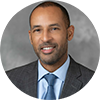Download PDF

The mission of the American Academy of Ophthalmology—to protect sight and empower lives—crosses borders at home and abroad. Even as we embrace our responsibility to address unique domestic needs there is tremendous opportunity for the research, education, quality, and advocacy resources that our global community of physician volunteers and Academy staff generates to positively impact patients no matter where they live.
The Academy has a long history of service to ophthalmologists worldwide. The original Academy of Ophthalmology and Otolaryngology was made open in 1912 to all ophthalmologists worldwide in good standing with their national societies, but in 1921 the bylaws were changed to require certification by the American Board of Ophthalmology (ABO), thus restricting international membership. Beginning in 1953 with the Royal College of Physicians and Surgeons of Canada and concluding in 1976, the Council—the forerunner of the Academy’s Board of Trustees—approved certification by the various Royal Colleges as a prerequisite for membership. Finally in 1984, a few years after a newly independent Academy of Ophthalmology merged with the American Association of Ophthalmology, an International Member category without board certification requirements was created.
The Academy has recognized the value that our international members place on educational content by emphasizing education as a key member benefit. This includes access to the ONE Network, which offers over 10,000 news articles, videos and podcasts, nearly 2,000 self-assessment questions, over 100 CME activities, and access to the Wills Eye Manual. The Academy offers a substantial portion of this content to our global community free of charge, including much of the content accessible through the AAO Ophthalmic Education app.
As a practical matter, care decisions must consider local epidemiology and resources. The Academy is committed to bringing an international perspective to its content, a good example of which is the widely used EyeWiki: of nearly 1,300 active registered authors almost 300 are international and approximately one-third of all articles have been authored or edited by international ophthalmologists. Nevertheless, many fundamentals of anatomy, pathophysiology, diagnosis, and treatment are universal, and the Academy now offers the standard OKAP examination internationally as an online proctored examination available to individuals and to programs along with training materials in the ONE Network.
However, it is increasingly apparent that while this content is universally valuable for physicians and their patients, the ability of members practicing in different environments to meet the current cost of Academy membership varies widely—and in cases may be prohibitive. The Board of Trustees has approached this dilemma with a great deal of thought and following extensive deliberations has endorsed consideration of a fresh approach to Academy global membership.
Over the next few months, the Academy will explore the option of a more flexible tiered membership dues structure for its international members based on World Bank income classifications and the Health InterNetwork Access to Research Initiative, a program established by the World Health Organization along with major publishers that groups countries into regions based on Human Development Index and gross national income in order to tier access costs to biomedical and health literature.
The goal is to enable our international colleagues to take full advantage of the Academy’s educational resources, including CME. A comprehensive program of lifelong learning requires a real investment of time and effort for busy physicians, and we believe that this is well worth recognition. To this end, the Board has also endorsed exploration of a pathway to re-institute an updated version of Academy Fellow designation for our international members who commit to ongoing education. While we believe that it is important to preserve the distinction of ABO certification, we also see the benefits of recognizing the pathways taken by international members of the Academy. Our work as we examine this further is to define the educational activities to prioritize. Current discussions include an initial summative assessment, evidence of ongoing CME covering a range of topics including ethics, and recognition of engagement in Academy activities.
Under the guidance of our outgoing President Dan Briceland and our Secretary for Global Alliances Paul Chan, we will continue over the next few months to solicit input and explore these opportunities to better support and engage our global members. Together, we have the opportunity to strengthen our entire profession and to enhance the care of all our vision patients here and abroad.